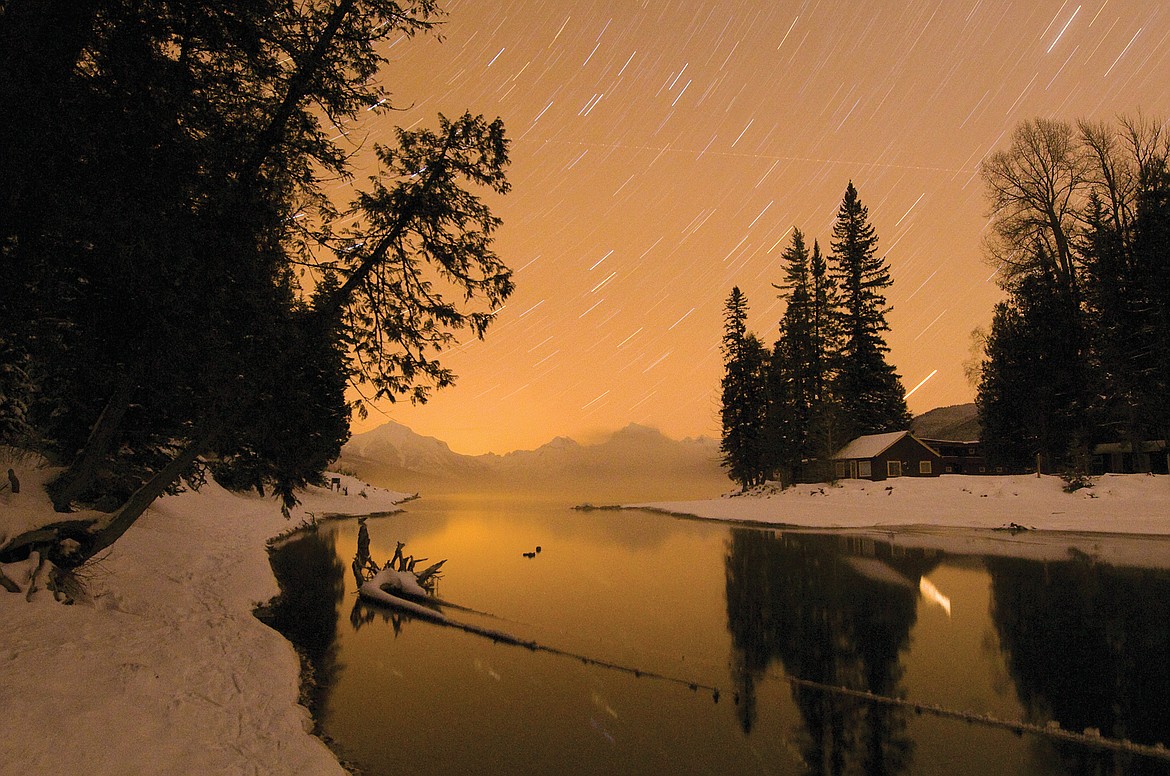A Dark Sky Defender
Armed only with a sky quality meter, a pencil and a datasheet, Iree Wheeler joined the ranks of this planet’s “Dark Sky Defenders” after receiving the distinction from the International Dark-Sky Association earlier this fall.
Wheeler, a former Glacier National Park employee, and one of just eight from around the world to receive the honor, was granted the 2020 Dark Sky Defender Award in recognition of her pivotal role in getting the 1.1 million acre area known as Waterton-Glacier International Peace Park provisionally designated as an International Dark Sky Place, under the “Parks” category, in 2017.
While serving as Glacier’s Dark Sky intern during the year of 2015-16, Wheeler was hailed by her nominators as “instrumental” in completing the arduous application process required to nominate the peace park as the world’s first transboundary International Dark Sky Park.
Once provisionally nominated, Waterton-Glacier became one of over 130 International Dark Sky Places scattered across the globe — covering a combined area of nearly 25 million acres — that pledge to protect their dark skies as a resource for future generations, and which are officially designated by the IDA.
Wheeler’s task as the Dark Sky intern was to gather and compile all data required in the certification process, which first meant proving that Waterton-Glacier did in fact have a night sky still dark enough for protecting.
This was done, she said, by taking measurements of night sky luminance using a sky quality meter at several sites throughout the parks, and ensuring they were within an acceptable range.
The process then included taking inventory of every exterior lighting fixture within the parks —which, for Glacier alone was over 1,500 lights— evaluating their condition, and then drafting a comprehensive lighting plan to create a strategy for transitioning each of those fixtures to dark sky compliant lighting over the next ten years.
Compliant lighting typically meant switching to lights that were lower in luminance as well as ones that projected a warmer temperature light, meaning less blue light-emitting and more amber-hued. It also meant adding shielding around bulbs to direct the light only where necessary, typically at the ground, and blocking the rest of the light from needlessly shining towards the night sky.
Being the sole intern for both parks, Wheeler coordinated frequently with Waterton staff, taking the data they had collected and compiling it into a joint application package that ended up being well over 200 pages.
Wheeler was also instrumental in informing park staff and concessions companies about the new designation, creating discussions through brown-bag presentations and videos on the importance of maintaining a dark sky resource, both ecologically and historically.
While facilitating these discussions, Glacier’s main concessionaire, Xanterra, jumped firmly on board, taking inventory of their own lights, many of which were already compliant, and developing their own comprehensive lighting plan.
During the application process, Wheeler and the Park Service were able to drum up support from local cities like Columbia Falls and Whitefish who wrote letters backing the initiative.
“The idea was to try and serve as a leader,” said Wheeler. “Like, ‘This is what we’re doing as far as our lighting replacements, so if you are considering larger-scale projects, these might be things you should consider.’”
Waterton and Glacier received a provisional International Dark Sky Park designation in April 2017, with the stipulation that an official designation would be given if the Park could show that 67% of it’s lights had been transitioned to dark sky compliant within three years.
Due to coronavirus pandemic complications, the IDA gave the peace park some leniency on completing that benchmark by last April, and will likely bestow the official designation in the coming months.
Even after completing the internship, Wheeler stayed on stand-by to help Glacier’s science and resource management department with odds and ends for the annual report which is submitted every year to the IDA to determine whether the parks are maintaining their qualification.
Wheeler is now transitioning away from involvement in the Dark Sky program as she begins earning her doctorate from Utah State University this January.
However, in seeking a Ph.D. from the University’s Institute for Outdoor Recreation and Tourism, Wheeler hopes to stay connected to the resources that places like the Waterton-Glacier International Dark Sky Park offer, and how they are impacted by humans, especially in a time when the nation’s wild places are seeing ever-growing visitation.
“My hopes and dreams are to be able to work on projects and with agencies on addressing these new crowds, and dispersal visitors, and all the implications that those have on the resources in the future,” said Wheeler. “I hope to have the tools after this Ph.D. to continue talking about and thinking about those concerns.”



